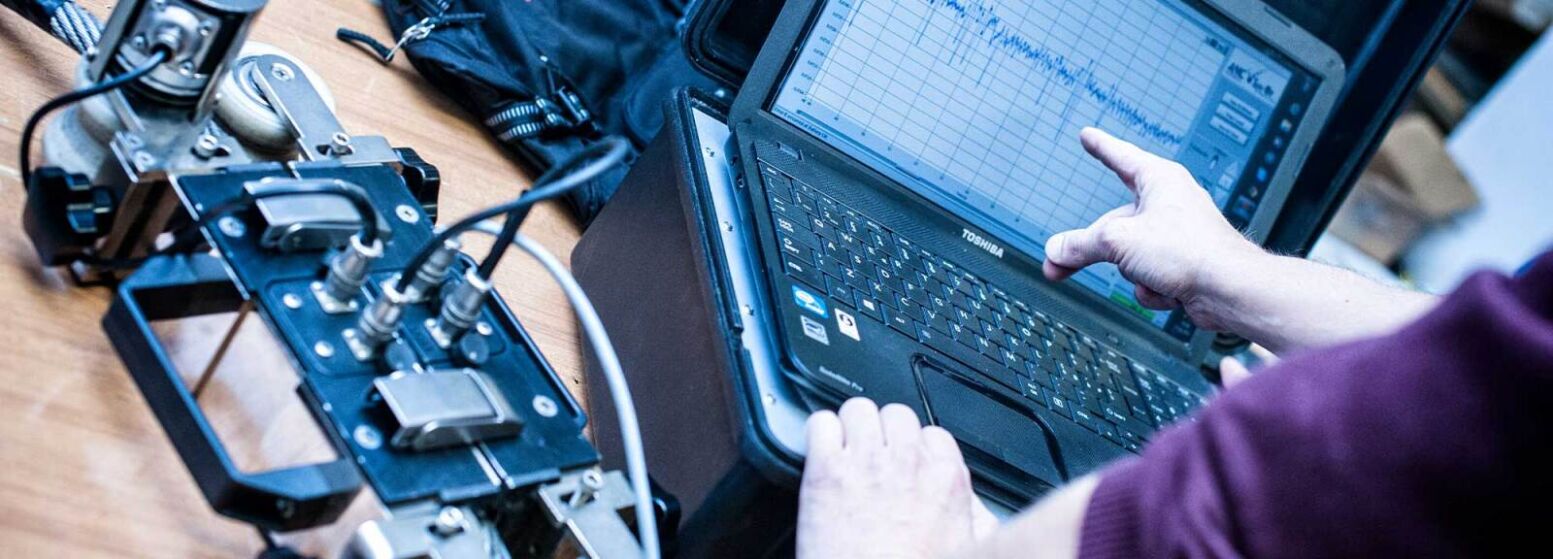Visual vs. Magnetic Rope Testing

Visual inspections have long been the mainstay for metallic rope analysis. While some of the flaws are visible externally, it’s not possible to visually analyse defects that are within the core of the structure.
A visual rope test is a strategic process that searches for any exterior anomalies, categorising them by name and the extent of the damage.
Magnetic Rope Testing (MRT) provides data about the exterior anomalies but also about the invisible anomalies within the core of the rope structure which traditional visual inspection can’t.
The limitations of a visual inspection
A visual inspection is a slow, careful process whereby the technician evaluates every centimetre of the rope. The major flaws that are identified from visual inspection are classified as:
- Broken wires (external fatigue): These occur through continuous use and repetitive bending. Once such a breakdown has occurred, further broken wires will quickly follow. The more a rope bends, the quicker this process occurs. While visual inspections are useful, these defects can often go unnoticed due to, sometime uncontrollable factors, poor light, difficult-to-access areas, grease, etc can all impede the reliability of visual inspection. On the other hand, MRT inspections reliability does not fall to these factors and will return reliable data that’s either missed or not noticeable to the human eye.
- Core protrusion: Caused by torque or twisting, this is where the core has slipped from its position and protrudes out from the rope’s integrity. Such a defect should be picked up during a visual inspection (and, indeed, during any visual once-over for macro defects). Once seen, the rope should be discarded and replaced.
- Valley breaks: Such flaws are difficult to define during a visual inspection as they’re hidden between the strands. They are potentially very dangerous and, if found, should raise a high degree of suspicion that further internal degradation has occurred. Even the best visual inspection can miss valley breaks, meaning that an MRT inspection is infinitely superior.
- Internal corrosion: This is potentially spotted during a deep visual inspection by red powder (rust) appearing through the strands. However, as this could come from other sources, the only way to confirm internal corrosion is through MRT.
- Internal defects: A visual inspection will not pick these up. The only way to define them is through MRT.
Bringing MRT into the equation
Visual inspections play a valuable role in routine maintenance. However, the results of MRT often portray a very different story – even after a visual inspection has deemed a rope safe.
This is because multiple factors will hinder the accuracy of visual inspection and ability to find and define flaws.
These include:
- Lubricant on the rope
- Location and accessibility
- Surrounding environment
- Human error
MRT is by far the best inspection method and the only process that can satisfactorily assess both interior and exterior anomalies. The latest testers can be used to carry out in-depth testing in the same time frames as a visual inspection. Ropes that are in constant use and need regular replacing are best assessed through continual monitoring.
Visual inspections certainly have their place. However, the only way to ensure ropes are fit for use is in combination with regular MRT.
User-friendly, advanced MRT products, such as the AMC range and the Intros MH22-45 are stand-out examples.
Contact us to find out more, or request a quote online.
